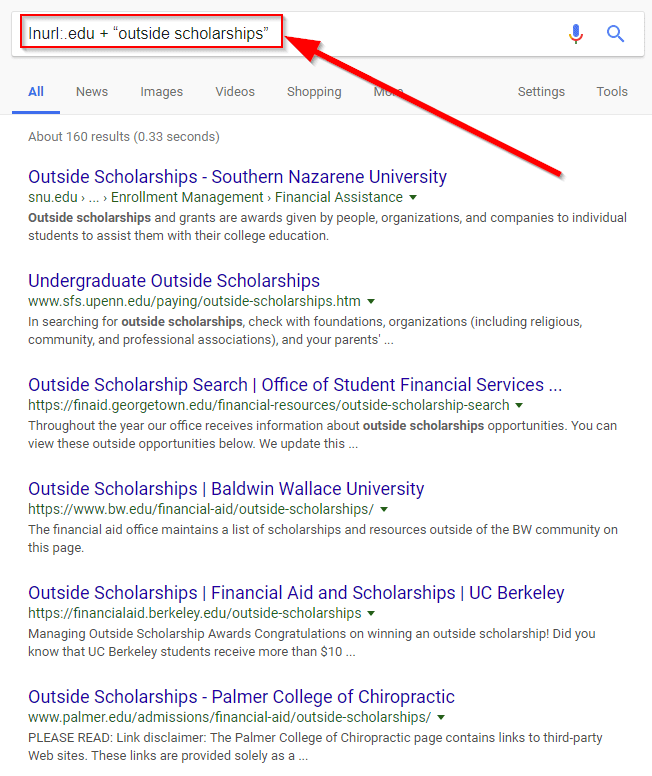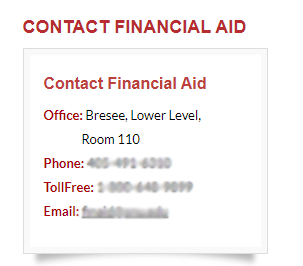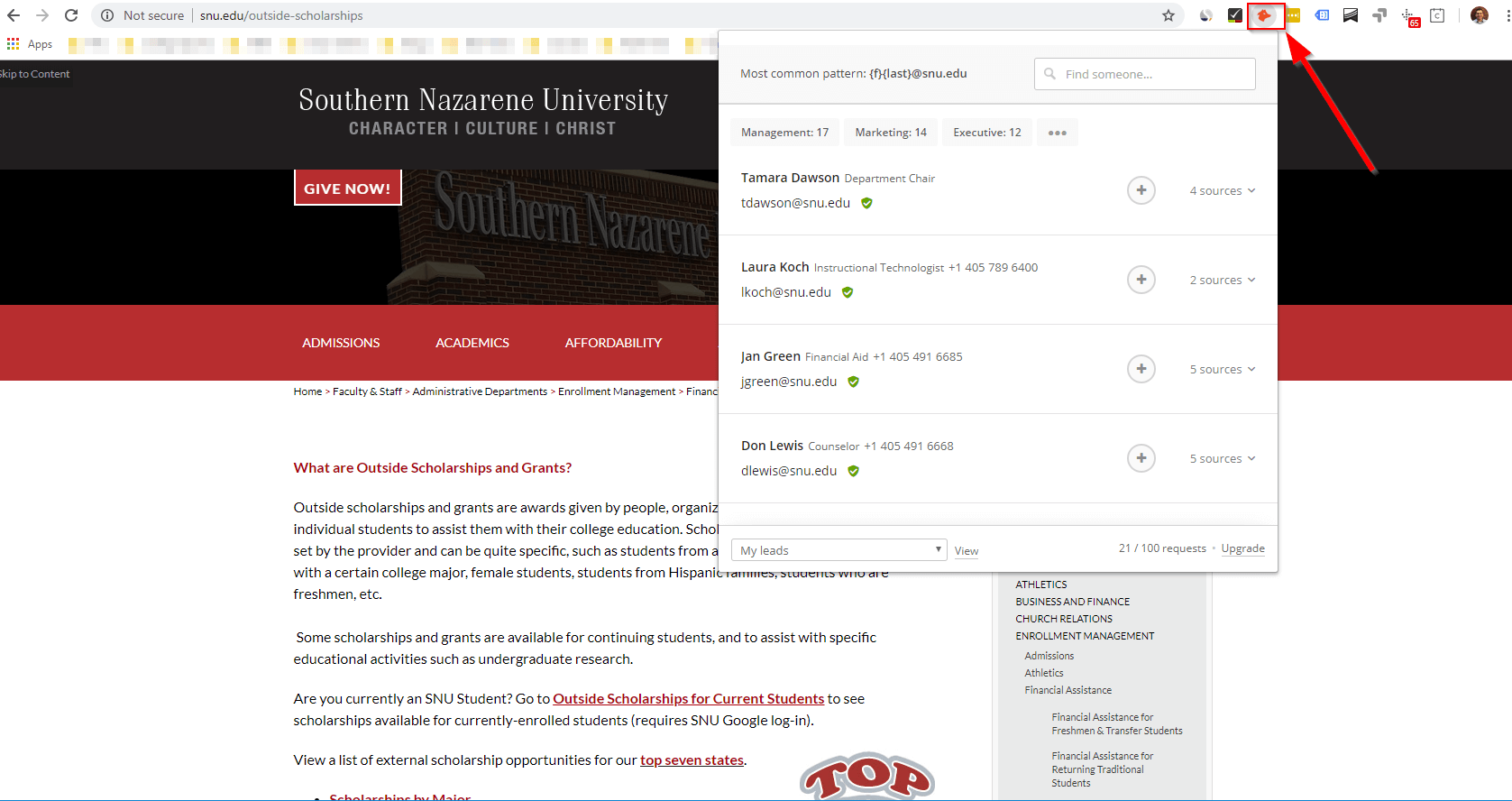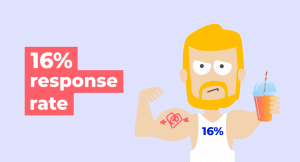It’s the holy grail of link building: the .edu link.
Colleges obviously have ridiculously high Domain Authority, and you can get a piece of that authority by getting one to link to you.
But that isn’t easy…
Colleges are more aware of SEO now than ever before because they’ve been pitched so much.
So, when a client approached me about a scholarship link building project, I wasn’t sure if it’d be worth it.
I figured the conversion rate on such a campaign would be less than 1%.
But I decided to do it anyway out of curiosity. 🙂
Within a 60-day window, I sent 200 emails to colleges across the United States with pages listing outside scholarships.
The results were shocking.
Drumroll, please…
The results:
- 12 links (with an average Domain Authority of 58) for a 6% conversion rate
- 97% open rate
- 12% reply rate (meaning those who replied gave us a link)
My hypothesis of a 1% or lower conversion rate was proven incorrect.
And the craziest part is that I used an impersonal email template. I only changed a few words for each prospect and sent the emails out quickly. Normally, you need to craft a killer outreach email to get any links.
On top of that, 95% of the emails I sent went to a general scholarship or financial aid email (not an individual).
I never would’ve thought the campaign would convert at 6%…
This experiment left me with a few conclusions:
- Colleges still give links for scholarships (if they have a page designated for outside scholarships)
- You don’t have to craft as good of an outreach email for scholarship link building
- You can reach out to a general financial aid office email address and still get links
- Colleges like offering their students scholarship opportunities they don’t have to fund (duh).
So, are you interested in getting some .edu links?
Here’s the exact process I used with this experiment:
How to get .edu links from scholarship link building
Step 1: Create your scholarship page.
As a marketer, it’s easy to overthink this.
We both want every page on our site to be a beautifully designed sales page.
But you really don’t need that here…
Just create a simple page that gives an overview of your scholarship, why the scholarship exists (outside of SEO reasons), and instructions on how students can apply.
A simple, undesigned WordPress page works fine.
Step 2: Use search operators to find outside scholarship pages.
I quickly discovered that general scholarship pages on college websites don’t usually list scholarships from for-profit businesses.
But luckily, a ton of colleges have external/outside scholarship pages—and this is where you’ll get your links.
To find these, use these search operators in Google search (or a tool like Scrapebox):
- Inurl:.edu + “outside scholarships”
- Inurl:.edu + “external scholarships”
- Inurl:.edu + “scholarships” (use this last because it will give you mainly general scholarship pages)
Go through each page in Google for these search operators and add all .edu, external/outside scholarship pages to a Google Sheet.
Step 3: Look for the best email to reach out to.
Like I said, most of the emails you send will go to general emails like scholarships@school.edu or finaid@school.edu—which didn’t seem to matter too much in my experiment.
But it’s best practice to find a decision maker’s email. You’ll increase your conversion rates by doing this (regardless of what kind of link building you’re doing).
To find an email address to reach out to, head to the main financial aid/scholarship page on the college’s site.
Almost every college site I went to had contact information in the sidebar.
If a particular college doesn’t, or if you want to find an email for the head of financial aid, use a service like Hunter.io.
Their Chrome Extension makes finding emails easy. All you have to do is click the icon in your toolbar to get a list of emails associated with a specific domain.
Step 4: Craft your outreach template.
Like I said, this doesn’t need to be anything special.
My template had 3 main parts:
- A quick introduction of your company/client
- Telling them you have a scholarship opportunity for their students
- A summary of the scholarship (deadline, how to apply, etc.)
It’s that easy. No need for incredible copy.
Here’s the exact template I used:
Hey, -NAME!-
My name is Hunter and I work with -CLIENT- —a company that creates -PRODUCT- that -PRODUCT BENEFITS- .
We’re very excited to tell you that we are offering a scholarship to -SCHOOL NAME- students and we’d love to make an application available to them.
In order to participate in our scholarship contest, student applicants must meet the following criteria:
- -REQUIREMENT-
- -REQUIREMENT-
- -EQUIREMENT-
To apply, students must -APPLICATION DETAILS- .
The student selected by our committee gets -SCHOLARSHIP AMOUNT- .
The deadline to apply is -DEADLINE-. Students can email -COMPANY CONTACT- to apply.
We’d be honored if you’d let your students know about this opportunity and include it in your external scholarship resources page here: -LINK-
Let me know if you have any questions and you can head to this page for more information on the scholarship: -LINK TO YOUR SCHOLARSHIP PAGE- .
I’d love to hear your thoughts.
Thanks!
-NAME-
Once you fill in your scholarship details, you only have to change three parts of that email template for each prospect:
- The person’s name
- The school name
- Their outside scholarship page link.
How easy is that?
Step 5: Follow up after 3 business days (if they don’t respond).
Stuff happens.
People forget to respond, they don’t know how to respond (so they ignore your email), or your email goes to the spam folder.
So, send a follow up.
One follow up won’t annoy people. It just gives them another chance to respond and helps things not slip through the cracks.
Do .edu links still count?
A recent tweet by John Mueller cast doubt on the value of .edu links.
On September 3, 2018 he tweeted:
https://twitter.com/JohnMu/status/1036538249488068608?ref_src=twsrc%5Etfw
What are we supposed to do with that?
Here’s my take on the situation:
Just like how legitimate guest posts still give your site authority, links from colleges or pages that Google doesn’t identify as “spammy” will also.
It says “a ton of the links” get ignored, but not all.
For now, you should be fine if the scholarship links aren’t obviously black hat. Google is taking notice of this strategy, though, so be cautious if you decide to try it out.
Colleges do still give scholarship links… should you use this strategy?
This has been a popular link building strategy for a while now, and it seems to still work for increasing your site’s Domain Authority.
But be careful not to expect ranking increases from this strategy.
Yes, increasing your DA gives you a better shot to rank your site as a whole, but contextual links usually give you the biggest ranking boost.
If you have the budget and legitimately want to give a scholarship to someone, this tactic can get you some easy high DA links.
Have you tried this strategy before? Did it work? Are you going to try it again? Let me know in the comments.








